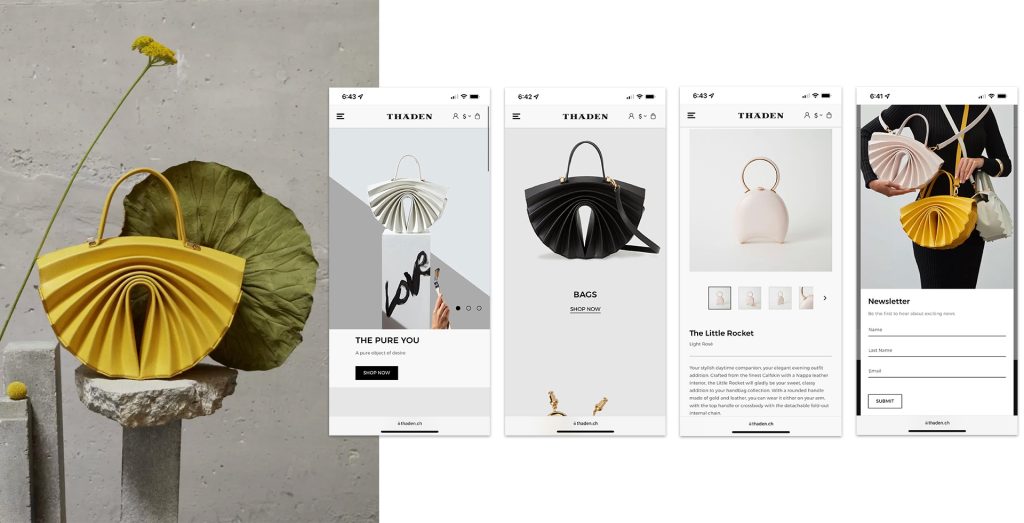Online Shopping Behaviours: What Are the Important Factors of Buying Decisions?
The way we buy things has completely changed!
Can’t be bothered to go to the supermarket? No problem; you can order same-day groceries without getting out of bed!
Need a stylish new outfit for your work party? Easy – you can compare options from different retailers online, read customer reviews and photos, and order a few options with buy-now, pay-later and free returns to ensure you’re covered.
With just a few clicks, everything we need (and plenty we don’t!) can arrive at our doorsteps like magic.
But with so much convenience comes a question: what drives us to hit that “buy now” button? What makes one website stand out while others are left in the dust?
In this blog, we’re going to break down online shopping behaviour, revealing everything you need to know!
Online Shopping Trends and Evolving Consumer Expectations
Online shopping is now a regular part of how we live. Whether it’s a late-night scroll through deals or a carefully planned purchase during a flash sale, the way we shop online keeps evolving.
But what’s driving these changes in consumer shopping behaviour?
The Stats That Tell All
E-commerce is booming, with global revenue projected to reach $4,791.00 billion in 2025! In the UK, online sales make up approximately 27% of all retail sales.
And mobile shopping is taking centre stage, with smartphones now accounting for the majority of online purchases in many regions. In fact, it’s believed that by 2027, 57.7% of all e-commerce sales will be made via mobile devices.
But beyond the numbers, how we approach shopping is also changing.
Here’s what’s shaping consumer behaviour online shopping-wise:
- Faster everything – Next-day delivery isn’t just impressive anymore – it’s expected. People want speed and efficiency. It won’t be long until same-day delivery is considered a norm. Amazon is already offering this in the UK.
- Sustainability first – Eco-conscious consumers care about packaging, sourcing, and even how a product is shipped.
- Social-first shopping – Platforms like TikTok and Instagram now function as digital storefronts. A scroll through your feed can quickly turn into a checkout screen.
- Reviews matter – Star ratings and customer testimonials are more influential than ever. Many won’t even consider a product without first checking what others have said.
- Subscription services are booming – From meal kits to beauty boxes, recurring models make shopping feel like an effortless experience.
The Role of Technology
Technology continues to push the boundaries of what’s possible. Today’s shoppers want more than just a functioning website; they want an experience that feels designed specifically for them.
- Personalisation is everywhere – AI-powered tools can suggest products you didn’t even know you needed.
- Speedy navigation – Sites that load in seconds (or less!) keep users engaged, while slow ones risk abandonment.
- Seamless payment options – From digital wallets like Apple Pay to buy-now-pay-later options like Klarna, payment methods are more flexible than ever.
- Omnichannel integrationvThe ability to browse online, order through an app, and pick up in-store creates a fluid shopping journey.
- Immersive experiences – Augmented reality (AR) lets users try on glasses, see how furniture looks in their home, or customise a product in real-time.
The result? Consumers are no longer just looking for products; they’re seeking brands that can meet their high expectations at every touchpoint. Deliver that, and you’ll not only make a sale but also improve brand perception and build loyalty.
Key Factors Influencing Online Buying Decisions
Online shopping isn’t just about convenience anymore. It’s about the entire experience.
Whether a customer decides to complete their purchase or abandon their cart depends on many subtle (and not-so-subtle) factors.
Let’s take a look at the most important buying decision factors.
1. Trust and Credibility
Trust is everything in e-commerce. If a shopper doesn’t feel secure, they’ll click away in seconds.
Building credibility starts with the basics: secure payment options, visible contact details, and clear policies. Adding verified reviews or trust badges can help significantly.
Then there’s transparency. Hidden costs, unclear delivery times, or vague product descriptions create doubt, and doubt is a conversion killer. Shoppers want honesty upfront, whether it’s about pricing or return policies.
2. Website User Experience (UX)
A smooth website experience is one of the biggest deal-makers or breakers.
- Speed matters – Google research shows that a one-second delay in load time can lead to a 20% drop in conversions.
- Clear navigation – Menus, filters, and a reliable search bar make it easy to find products fast.
- Consistency – Fonts, colours, and layouts that match your brand keep shoppers engaged.
- Accessible design – Don’t forget those with disabilities. Features like alt text, keyboard navigation, and text-to-speech compatibility are must-haves.
Think of your website like a physical store. Would you walk into a shop with unclear signage or cluttered aisles? The same logic applies online.
3. Pricing and Perceived Value
It’s not just about having the lowest price. It’s about convincing customers they’re getting a good deal.
- Highlight savings clearly, whether it’s a percentage discount or “save £X”.
- Free shipping thresholds (e.g., “Spend £50 for free shipping”) can encourage customers to add more to their basket.
- Comparison charts help shoppers see why your product is better than competitors’.
The goal is to show why your product is worth the price!
4. Product Details That Build Confidence
The product page is where shoppers make their final decision. This means everything here needs to scream “buy me!”
- Photos – Include high-quality images that show the product from multiple angles, in use, and in context.
- Descriptions – Be detailed but concise. Mention dimensions, materials, and features, and explain how the product solves a problem.
- Video demos – A quick video can do wonders to showcase features, especially for tech or home appliances.
For some shoppers, a lack of information feels like a gamble, and no one wants to gamble with their money.
5. Shipping and Returns
Delivery and return policies can make or break the shopping experience.
Did you know that 84% of customers are more likely to shop with a brand that offers free returns? This is important because it reduces the perceived risk of buying online.
Customers also want flexible delivery options. Think same-day, next-day, or even in-store pickup. Being upfront about timelines helps manage expectations and reduces complaints.
6. Personalisation
Shoppers love to feel special, and personalisation is one way to deliver that.
For instance, displaying “You might also like” recommendations based on their browsing history or sending them a tailored discount for their birthday can go a long way.
Amazon excels here. Notice how their homepage feels customised to your recent searches? This level of personalisation increases engagement and encourages repeat visits.
7. Social Proof
We trust other people’s experiences more than any ad, which is why reviews, testimonials, and user-generated content are so influential.
- Highlight top reviews or customer photos directly on product pages.
- Encourage reviews with post-purchase emails.
- Include user-generated content on social media – it’s a more authentic way to connect.
For brands targeting younger demographics, influencer partnerships can work wonders! Seeing their favourite creator endorse a product makes it feel aspirational and attainable.
Mobile vs. Desktop Shopping
The device someone uses to shop online can tell you a lot about their mindset and expectations. Desktop and mobile shopping habits aren’t just different – they’re often worlds apart.
To succeed, brands need to understand the differences in customer shopping behaviour based on device and ensure their websites are optimised for both experiences.
Shopping Habits – Mobile vs. Desktop
Desktop shoppers
Desktop shoppers tend to treat the experience more like a project. They’re usually sitting down, comparing options, reading product information and reviews, and doing detailed research. For higher-value purchases, such as electronics or homeware, people are more likely to feel comfortable browsing on a larger screen. Desktops also tend to have higher average order values, partly because they’re often used for more deliberate shopping sessions.
Mobile shoppers
Mobile shoppers, on the other hand, are typically in a hurry. They’re grabbing a coffee, commuting, or scrolling during a lunch break, making purchases based on convenience and impulse. They’re less likely to spend time clicking through endless tabs or comparing specs in detail. But the sheer number of mobile shoppers is impossible to ignore; smartphones now account for almost 80% of all e-commerce site visits, and the trend keeps growing.
The Importance of Mobile-Friendly Design
It’s no exaggeration to say that a mobile-friendly website can make or break an online store. Here’s what brands need to prioritise:
- Responsive design – Your website must adjust seamlessly to any screen size, from the smallest phone to the largest tablet, without compromising usability.
- Simple navigation – Mobile shoppers don’t have the patience for cluttered menus. Intuitive categories, search filters, and prominent buttons are essential.
- Optimised load speeds – Mobile users are often on-the-go, and slow loading times can result in them abandoning your site entirely.
- Clear call-to-action (CTA) buttons – Make CTAs bold and prominent, with enough spacing to prevent accidental clicks.
- Streamlined checkout process – Autofill options, payment method flexibility (like Apple Pay or Google Pay), and a guest checkout option make the process faster and easier.
Examples of Catering to the Mobile Experience
Pocket Wardrobe
We worked with Pocket Wardrobe to create a sophisticated fashion app and website that connects shoppers with stylists, shop assistants, and other fashion enthusiasts.
The aim was to bridge the gap between convenience and interactivity, particularly for time-pressed urban professionals.
The app’s mobile design prioritised usability, featuring intuitive navigation and a beautifully presented interface. Pocket Wardrobe allowed users to gain real-time fashion advice, discover exclusive brand offers, and interact with a community of fashion lovers.
The mobile-first approach ensured a seamless experience that encouraged engagement while meeting the needs of shoppers on the go.
Thaden
Thaden, a luxury handbag brand with a focus on artistic craftsmanship, approached us to build an e-commerce platform that embodied their brand values.
The solution emphasised visual storytelling, with a responsive design tailored to mobile users.

We created an image-centric, minimalist interface that highlighted Thaden’s attention to detail and brand aesthetic.
Every stage of the design process was focused on delivering a modern and effortless experience, particularly for busy mobile shoppers. The site’s modular structure ensured flexibility for future growth, while responsive web design allowed it to adapt seamlessly to any screen size.
As a result, Thaden saw their digital growth double after the launch of the e-commerce site!
The Role of Personalisation in Online Shopping
In a world where consumers are constantly bombarded with choices, personalisation has become a powerful way to stand out. It’s no longer enough to offer great products; shoppers want experiences tailored to their preferences, behaviours, and needs.
Why Personalisation Matters
Personalisation builds a sense of connection between the brand and the customer. When a website suggests products that feel handpicked for them, customers are more likely to engage and convert.
This tailored approach isn’t just appreciated—it’s expected. According to a study by Epsilon, 80% of consumers are more likely to buy from brands that offer personalised experiences.
It also drives loyalty. When shoppers feel understood, they’re more likely to return, creating long-term customer relationships.
Examples of Personalisation in Action
- Dynamic recommendations – Think “You May Also Like” sections on product pages or recommendations based on past purchases.
- Personalised marketing emails – Sending tailored product updates, discounts for birthdays, or follow-up emails on abandoned carts increases engagement significantly.
- Location-based offers – For example, using geolocation data to recommend products suitable for a shopper’s climate or lifestyle.
- Interactive shopping tools – Virtual try-ons or product customisation options, such as selecting colours or styles, make shoppers feel in control of their experience.
Takeaway Notes
Consumer buying behaviour is complex, shaped by a mix of convenience, trust, technology, and personalisation. Understanding these factors is critical for businesses aiming to capture and retain digital-savvy customers.
Here are the key points to remember when it comes to consumer behaviour in online shopping:
- Consumer expectations are higher than ever – Fast load times, seamless navigation, and mobile optimisation aren’t just perks; they’re necessities.
- Trust builds loyalty – Transparent pricing, secure payments, and social proof like reviews and testimonials are essential for winning customer confidence.
- Mobile shopping dominates – The rise of mobile commerce means brands must focus on delivering fast, intuitive, and visually appealing experiences tailored for smaller screens.
- Personalisation is powerful – Shoppers value tailored experiences, whether it’s dynamic product recommendations, interactive features, or personalised offers.
- Experience matters – From engaging product pages to user-friendly checkout processes, the entire shopping journey should feel effortless and enjoyable.
If you want to stay ahead of consumer trends and wow customers with a user-centric design, contact Appnova today! We’re an innovative ecommerce agency with years of experience and a great track record. Give us a call or drop us an email to discuss your needs.
Subscribe To Us
Contributors
Categories
Subscribe To Us
Contributors
Categories

This website uses cookies so that we can provide you with the best user experience possible. Cookie information is stored in your browser and performs functions such as recognising you when you return to our website and helping our team to understand which sections of the website you find most interesting and useful. Third party cookies such as Google Analytics is also used on this site to provide analytics in order to better understand the user engagement on our site.
You can adjust all of your cookie settings by navigating the tabs on the left hand side.
Strictly Necessary Cookie should be enabled at all times so that we can save your preferences for cookie settings.
If you disable this cookie, we will not be able to save your preferences. This means that every time you visit this website you will need to enable or disable cookies again.







0.Comments